By Charlene Muhammad CHARLENEM
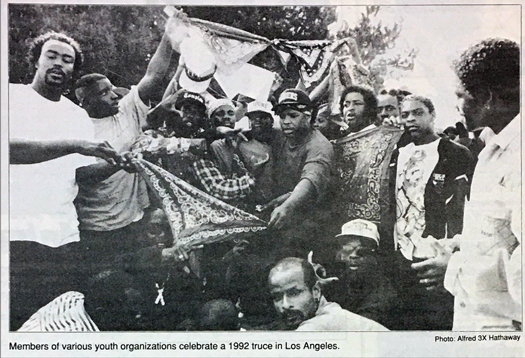
LOS ANGELES–Gang intervention experts, activists, and community residents will commemorate the 25th anniversary of the 1992 Gang Truce on April 29. Gang members from the Imperial Courts, Jordan Downs, Nickerson Gardens and Hacienda Village housing projects in L.A.’s Watts neighborhood established a peace treaty on April 28, 1992.
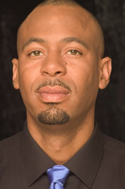
That was the day before an all-White jury in the L.A. suburb Simi Valley acquitted four officers in the savage beating of Black motorist Rodney King and sparked the L.A. uprising, also known as the L.A. rebellion and riots.
“The truce grew out of our frustration with the killing over colors and the excessive force exhibited by the Los Angeles Police Department,” said Aqeela Sherrills, an architect of the truce.
“The only connection (to the Rodney King beating) was that we knew that the police were not going to protect and serve us, so we decided to do it ourselves. We had been working on the peace treaty since 1988, when we connected with Minister Farrakhan’s Stop the Killing tour in ’89 and subsequently met Jim Brown,” Mr. Sherrills told The Final Call.
The Honorable Minister Louis Farrakhan of the Nation of Islam embarked on a “Stop the Killing” tour in the 1980s and early 1990s.
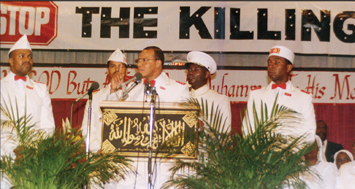
“I went across this country asking you to stop killing yourself, because I knew that the government was making war on Black youth, Black men in particular. Brothers and sisters, the Million Man March didn’t happen in a vacuum–I had been working on that 10 years prior! I crisscrossed this country saying to Black youth ‘the government has plotted against your life,’ and I opened both Bible and Holy Qur’an to show you the conspiracy,” the Minister said in his Nov. 3, 1996 address delivered at Mosque Maryam and entitled, “Crack Cocaine–The Great Conspiracy to Destroy the Black Male.”
“The Bible and Qur’an are not some silly Books of ancient people, these Books are real, and are filled with prophetic, symbolic pictures of things that happened yesterday to give you a picture of what is happening today,” Min. Farrakhan said.
Twenty-five years later, it seems the Black community still exists in the same conditions as it was back then, said Mr. Sherrills.
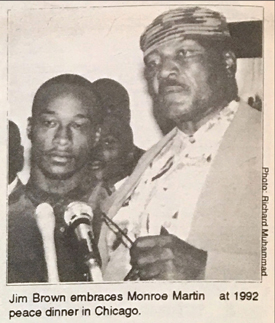
“The LAPD beating on Rodney King produced the civil unrest in the city, and today we have Black Lives Matter that’s organizing all across the country around excessive force that’s being perpetrated by law enforcement and the killing of our children with impunity in communities more than ever,” he said.
Watts has been plagued by poorly performing schools, high unemployment and poverty, lack of economic development, very few green spaces and access to healthy foods, and an absolute shortage of prevention and intervention resources, according to the Advancement Project.
Mr. Sherrills said solutions must be community-driven as was the original Peace Treaty.
Activists, residents, and gang interventionists plan to start 25th anniversary festivities by screening two documentary films, according to Mr. Sherrills. One is “Imperial Dreams,” the story of Bobby “YaYa” Jones from the Imperial Courts Housing Projects, and an interview and discussion with him.
Plans also include a screening of football legend and peacemaker Jim Brown’s “American Dream,” and host a panel discussion with Mr. Brown, (who is co-founder with Mr. Sherrills of the gang intervention organization Amer-I-Can) and other key organizers of the Peace Treaty.
Topics include the future of the Peace Treaty, public safety, community-based intervention, and investment and development. A small VIP reception, food trucks, live DJ, and Watts car clubs will help round out the event, Mr. Sherrills said.
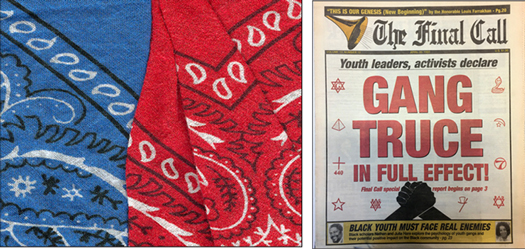
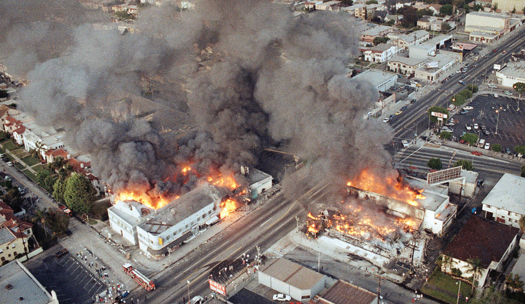
“The 25th anniversary is about recommitting ourselves to this work, to ensure, now, in hindsight, that our communities are war zones and our families do suffer from traumatic stress disorder and hyper vigilance and vicarious trauma, and there’s a real need to address those deep-rooted, traumatic experiences with alternative healing technology, and help people to heal from the trauma, but at the same time help people to get active in participating in the public safety process, because we can’t have public safety without the public,” Mr. Sherrills stated.In the first two years of the peace treaty, gang homicides decreased 44 percent, according to Mr. Sherrills. That produced a domino effect across L.A. and the country. As well, Watts sustained the original Peace Treaty for 12 years in its original form, he said.
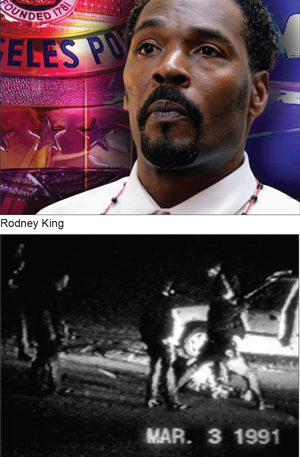
“Minister Farrakhan came around the 10th anniversary of the Peace Treaty and hosted a conversation with us at WLCAC (Watts Labor Community Action Committee), just kind of reaffirming ourselves and reaffirming our commitment to this vision of having a safe, violence-free neighborhood,” he continued.
A lot came out of Watts after the truce, including the Watts Gang Task Force, Mr. Sherrills said. He hailed it as a model for public safety which involves the community, law enforcement, community-based organizations, faith-based organizations, and residents.
As a result, Mr. Sherrills said, the community brought in the Community Safety Partnership, co-founded by civil rights attorney Constance Rice. It helped to implement a unique community-based violence reduction model with the LAPD, L.A. Housing Authority, residents and others, and reduce violent crime by more than 50 percent.
The legacy of the gang truce is continuing, despite the frequencies, said Mr. Sherrills. Sometimes Watts is up and sometimes it’s down, he said.
Conflicts continued to happen, because Watts has the largest concentration of public housing west of the Mississippi River, thus a large concentration of poor people with a lot of problems, and they’re kind of trapped in this vicious cycle, Mr. Sherrills stated.
The progress and setbacks also stem from a deep-seated hatred heaped on Black youth by their enemy, which they carry out on each other, said Tony Muhammad, Nation of Islam Western Region Student Minister.
He added the gang truce impacted more than just Watts. “It was the catalyst that actually started most hoods to reexamine what they were doing in regards to the devastation of our own people,” he said. That L.A. gang truce was initiated, the root of it, was Minister Farrakhan’s clarion call for youth to stop the killing, he said.
Gang intervention and the emergence of more local activists grew out of the truce, said Min. Muhammad.
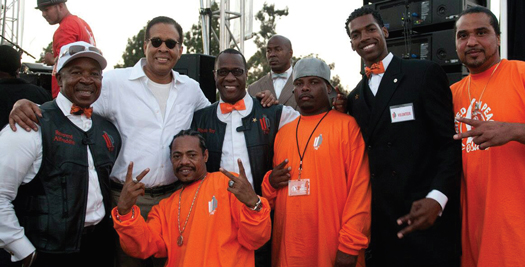
“I have to say that we have seen progress. We now have the Peace Rides … the United Hood Nation, so it’s still growing. It’s still evolving,” Min. Muhammad said. He noted that during the second anniversary of the Peace Rides in Nov. 2014, Mayor Eric Garcetti credited the effort with reducing crime the lowest it had been since 1958.During “the first full year of the monthly Peace Rides, annual crime statistics compiled by the Los Angeles Police Department show the City of Los Angeles coincidentally experienced a historic drop in crime, the lowest number of homicides since 1966,” indicated a proclamation from the mayor. The Peace Rides included gang interventionists, the Nation of Islam, motorcycle and car clubs riding for peace in Southern California neighborhoods.
To continue steady growth, progress and to stay on message, Min. Muhammad stated, “We have to keep almighty God in the equation and know that we’re dealing with a spiritual problem.”
Songs, such as “Peace Treaty,” produced by rapper, West Coast Kam (Mueed Muntaqeem Muhammad), also helps keep people on message.
Kam said he was inspired to write “Peace Treaty” after seeing the unrest, people’s response to the Rodney King verdict, White racial injustice, and the response for Black unity among L.A.’s most notorious street gangs, the C.R.I.P.S. and Bloods, particularly in Watts.
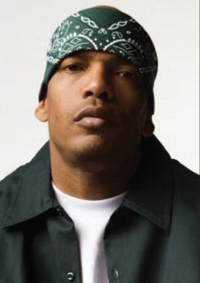
“I recognized it as the fulfillment of the Bible story about ‘the dry bones in the valley coming together, standing up as an exceedingly great army,” Kam said. It was one of the last songs he wrote–if not the last–for his debut album “Neva Again,” released early 1993.
He’d already written a song on the album called “Watts Riot,” featuring rapper/actor Ice Cube, which foretold of the ’92 uprising, Kam told The Final Call.
“But since albums take months (and sometimes years) to produce, promote, and be released, by the time my album was released in early 1993, the ’92 uprising and gang truce had already happened, so it looked like I wrote the song, ‘Watts Riot’ after the actual ’92 riot. But I actually wrote and recorded it before that,” Kam stated. “Peace Treaty” was the only song he wrote after the uprising, he said.
“That was the greatest demonstration of Black unity I had ever witnessed in my life, until three years later with the Million Man March called by the Honorable Minister Louis Farrakhan,” he said.
Kam said the impact of the gang truce is similar to the impact of Barack Obama being the first Black president of the United States.
“It showed and proved to everybody that seemingly impossible things are possible for the Black man of America–when we are righteous.”
For more information contact Aqeela Sherrills at 323-228-7622 or Shameka McCoy at 323-836-7622.












